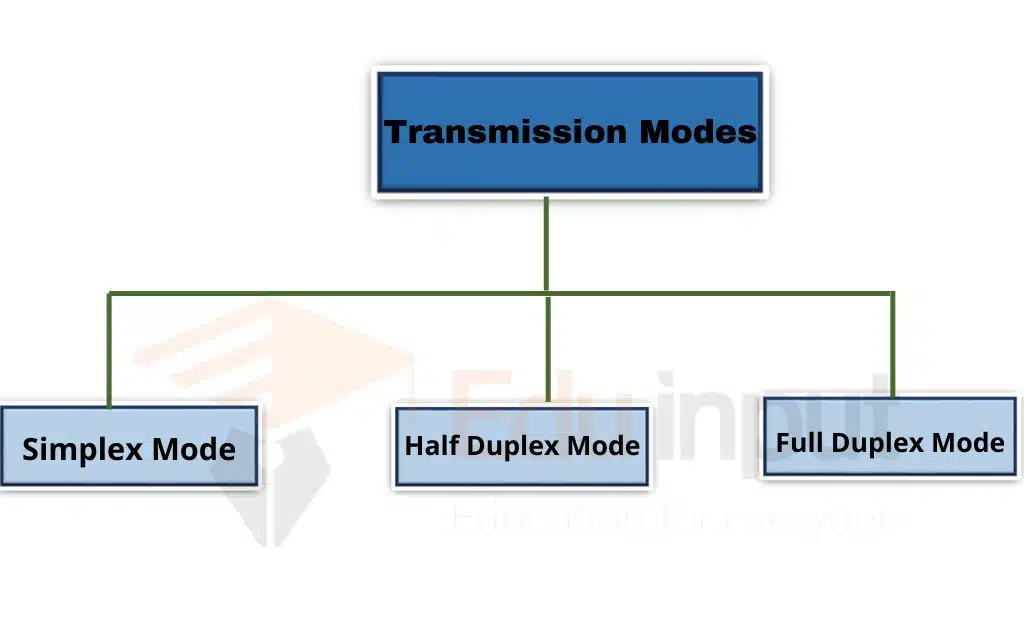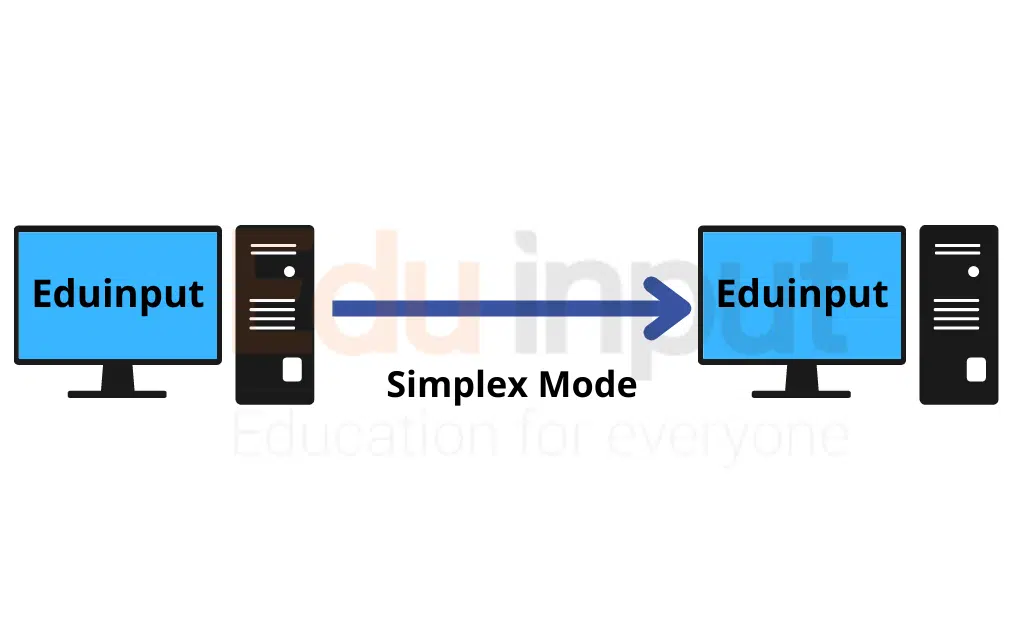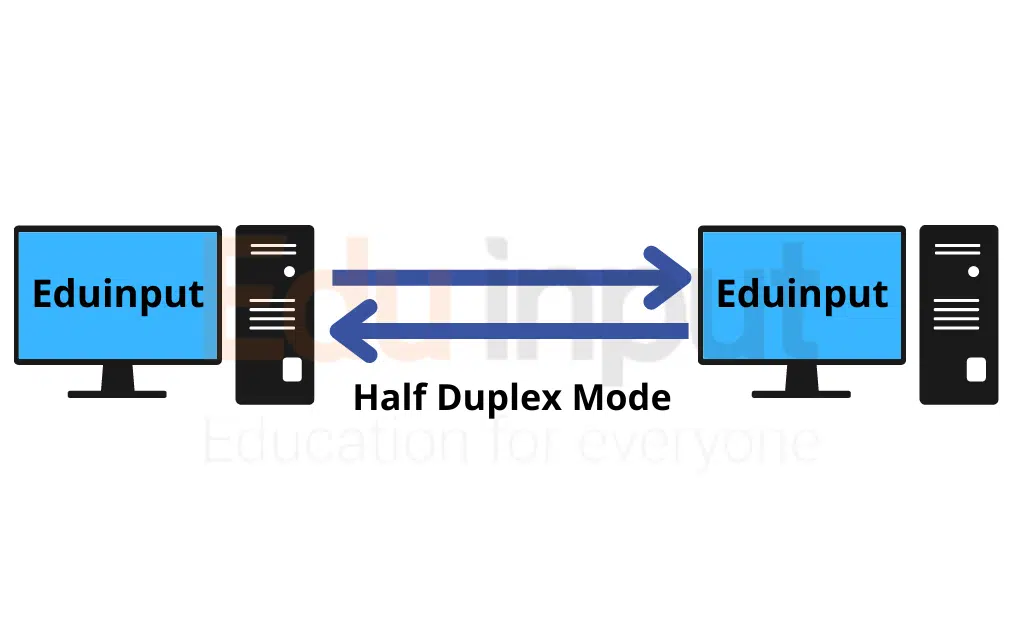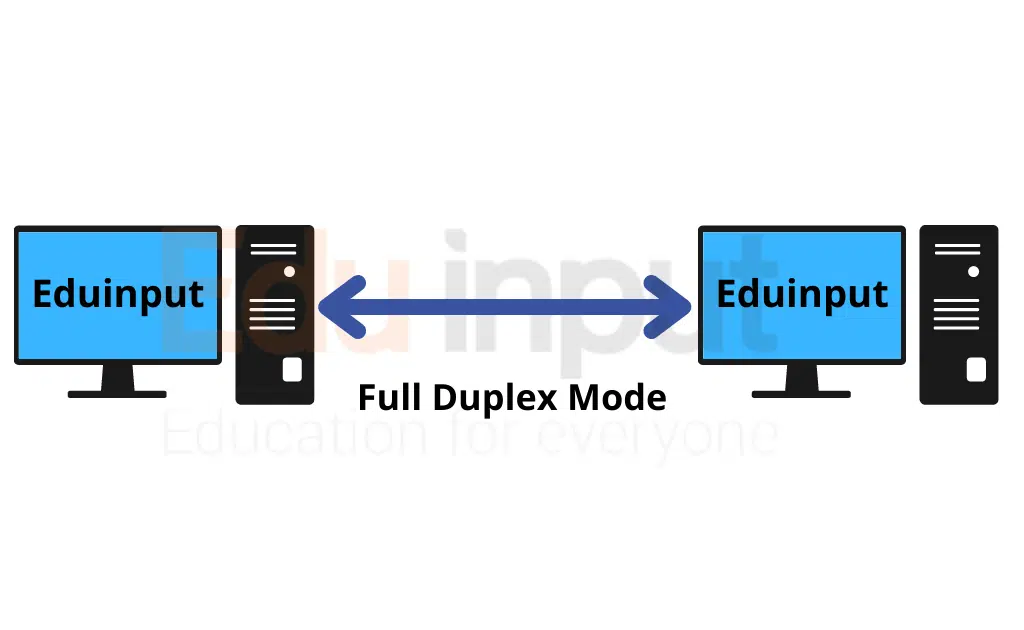Data Transmission Modes–Types of Data Transmission
The way to transmit data from one device to another must be connected via a cable or wire. The connection is called a link. There are two types of links: wired (cable) and wireless (radio).
Types of data Transmission Modes

There are three types of data transmission modes
Simplex Transmission Mode
Simplex transmission mode (STM) is a method of data communication between two or more devices or computers over a single wire pair. This method is commonly used in telephone systems, cable television networks, and some wireless networks. In STM, each device transmits at the same time, and only one device receives it at a time.

Half Duplex Mode
Half duplex mode means that only one side of the communication line can transmit data at a time. For example, if you want to send a message from your PC to another device such as a printer or scanner, you would connect both devices to the same network cable using a switch (or hub).
The switch then connects each device to the other via two separate cables. Half duplex mode allows you to communicate between the two devices simultaneously.
You can use half-duplex mode to transfer files between computers. This method is useful when transferring large amounts of data over long distances. In addition, you can also use half-duplex mode when sending email messages.

Full Duplex Mode
“A full-duplex communications system is a communications system capable of simultaneous transmission and reception.”
Full Duplex Transmission Mode (FDT) is a method of communication between two devices where both parties send data at the same time. The main difference between FDT and Half Duplex Transmission Mode (HDT) is that HDT allows only one party to transmit at a given time. This means that the other party cannot hear or respond to the message until the sender has finished transmitting.

Types of Data Transmission
There are two types of data transmission
Serial Transmission
Serial data transmission is the simplest type of data transfer between two devices. In serial data transmission, each bit of information is sent over a single wire at a time. A device sends out a series of 1’s and 0’s, called bits until the entire message is transmitted.
Each bit is represented by a voltage level on the wire. When a 1 is sent, the signal goes high; when a 0 is sent, the signal stays low.
Parallel Transmission
Parallel transmission refers to a method of transmitting data over multiple wires at once. This technique allows for faster transfer speeds compared to serial transmission.
Frequently Asked Questions (FAQs)
What are the three transmission modes?
Simplex Mode
Half-duplex Mode
Full Duplex Mode
What is the data transmission mode?
Data Transmission Mode (DTM), also known as DTCM, is a method of transmitting data over a radio frequency band using amplitude modulation.
What is the parallel transmission?
Parallel transmission defines a transmission structure that shares multiple data bits at a similar time over separate media. In general, parallel transmission can be used with a wired channel that uses multiple, separate wires.
What is an example of serial transmission?
Examples of serial mode transmissions include connections between a computer (e.g., a personal computer) and a modem using the serial port interface.






Leave a Reply